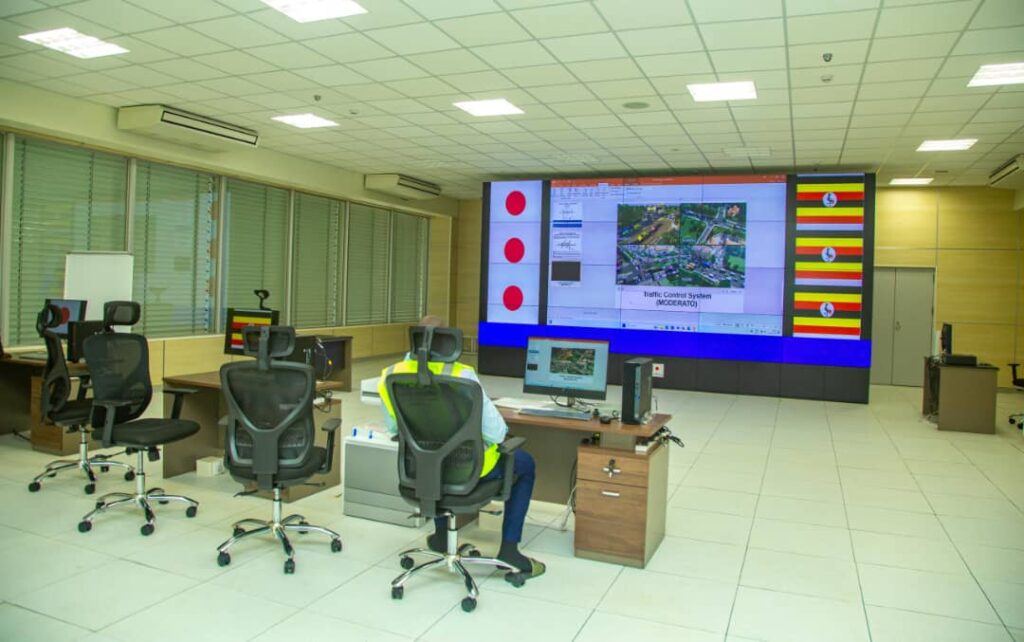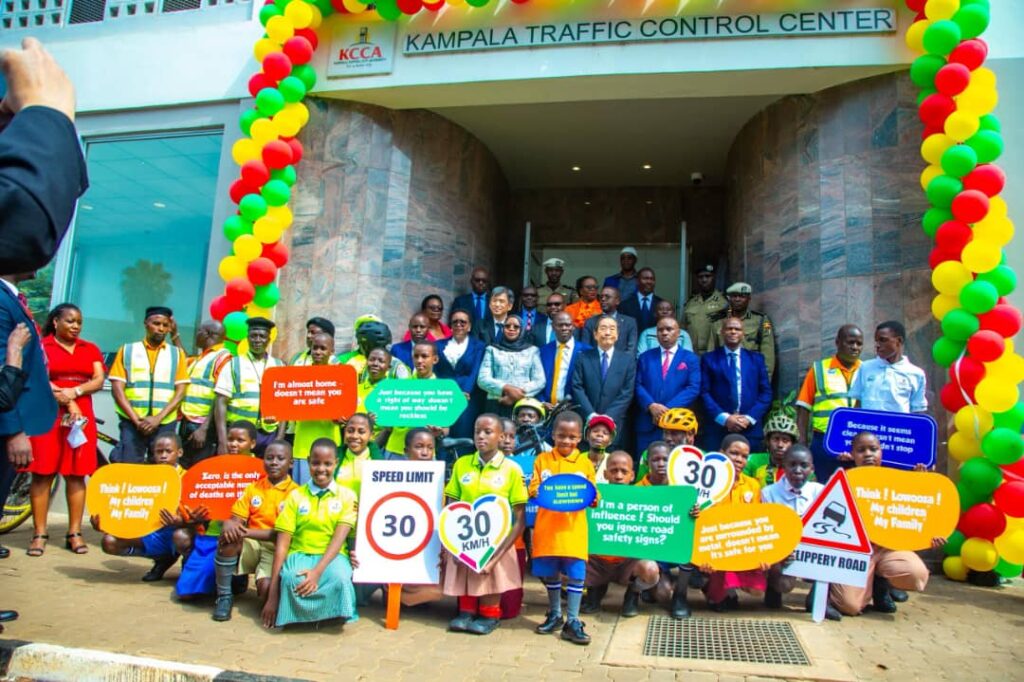
KAMPALA. Kampala Capital City Authority has unveiled a new artificial intelligence (AI) led traffic lights system aimed at reducing traffic congestion in the city .
The new traffic lights that use AI technology called Moderato, detect activities on the roads and quickly take action by releasing traffic on congested lanes.
This traffic control system technology, where the government of Uganda and Japan have spent Shs47b, will eliminate deployment of traffic officers and wardens at road junctions to manage movement of vehicles.
Sharifah Buzeki, the executive director of KCCA, said the new system marks a significant milestone in modernising Kampala’s transport infrastructure.

“The centre is equipped with advanced technologies that will transform how we manage traffic flow across the city and we are proud to have met the project timeline,” Ms Buzeki said on September 3.
The new project saw the redesign of city junctions and establishment of more lanes, traffic lights and zebra crossings.
The first phase of the project included 256 traffic signals erected at 30 key intersections since the project started in October 2022.
Ms Buzeki said they have also built a traffic control centre at the KCCA headquarters that would enable monitoring of all activities.
“The key functions of the Traffic Control Centre include: monitoring and adjusting traffic lights at 30 intersections, detecting congestion, incidents, or equipment failures for immediate response and using detectors and data-collection tools to provide insights for planning and enforcement,” she said.
The Japan International Cooperation Agency (JICA) chief representative in Uganda, Mr Inoue Yoichi said the project is part of the two countries’ efforts to make Kampala a smart city and deal with rising growth.
“This system is scalable to accommodate Kampala’s future growth and my humble request to KCCA is to ensure that future projects are well-integrated with this system so that we maximise the benefits of this significant investment,” Mr Yoichi said.

He said the investment should be safeguarded from vandalism.
“With responsible use of these facilities and continuous improvement, Kampala has the potential to become a model smart city in the region,” he said.
He said traffic congestion affects productivity, contributes to pollution and accidents.
“This project therefore comes as a solution to address these challenges, laying the groundwork for a more liveable Kampala city,” he said.
The Minister of State for Kampala Capital City and Metropolitan Affairs, Mr Kyofatogabye Kabuye said the centre fits well in Uganda’s national development plan IV to modernise transport, clean environment and good health.
“We are enhancing our efforts to reduce greenhouse gas emissions, and as part of this agenda, we have even gazetted a car-free day. This is not just about traffic flow, it’s also about improving health and protecting the environment,” Mr Kyofatogabye said.
His only fear was on the side of the road users.
“I appeal to road users to use these facilities responsibly and look at them as an aid for safer and better transport—not as primitive mechanisms,” he said.
‘Deal with black spots’
Kampala Mayor, Mr Erias Lukwago said urban mobility is one of the most pressing challenges with travel time continuing to reduce from 4.4 minutes per kilometre to three minutes per kilometre.
“If the one minute reduction is still a challenge, my question remains that how is this new project going to further improve travel times in Kampala?” he asked.
He said black spots on roads need to be dealt with.
“We should stop lamenting about these black spots and come up with lasting solutions, beyond traffic flow. This centre must help us achieve wider policy goals, such as reducing emissions, improving transport services, and supporting our technical teams with accurate data and information,” he said.
He called for the adoption of a multi-modal transport plan that integrates different means like public transport, cycling and walking.
The mayor further called on the government to protect and sustain the new traffic control system.
“If we do not have strong measures to safeguard and maintain this initiative, it risks becoming a white elephant. The duty we have is to sustain these projects because they contribute immensely to improving transport mobility,” he said.
KCCA Deputy Executive Director Benon Kigenyi said the Authority will monitor traffic flow in real time, coordinate signal timings, and work with the Uganda Police Force to implement measures that will ease congestion.

“We shall now reduce human interventions, the traffic wardens and police officers, who are often forced to man these intersections in the rain, dust, and scorching sun,” Mr Kigenyi said.
This will require investment in mass transport and railway connections to integrate with the existing road network.
“Without designing mass transit corridors that extend beyond Kampala’s inner circle, we risk exporting the city’s problems to our neighbours in Wakiso, Mukono, and Mpigi, which is not good neighbourliness. We would love to see our neighbouring authorities from Kalagi, Seeta, and Mukono to Nsangi be part of a system that breathes together and complements one another,” he explained.
In 2022, KCCA and Parliament revealed that Uganda loses about Shs500 million daily in traffic jams, with individuals losing at least 52 working days every year due to congestion.
This means Ugandans spend an average of 90 minutes a day stuck in gridlock—about 450 minutes or 7.5 hours per work week.
That is the equivalent of losing one full working day to traffic jams each week. Out of the 200 junctions in the city, KCCA has managed to install 59 signals.